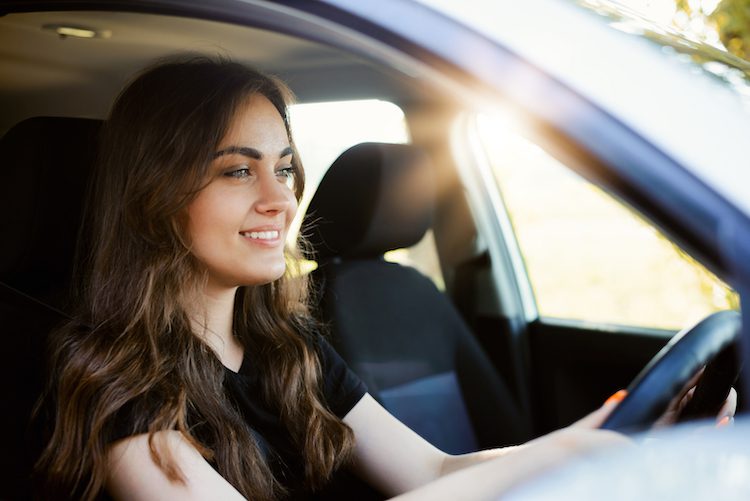What Can You Achieve If You Drive Smoothly?

You might get this question on your driving theory test:
What Can You Achieve If You Drive Smoothly?
a) Increase fuel consumption by 15%
b) Reduce fuel consumption by 15%
c) Increase journey times by 15%
d) Reduce journey times by 15%
The answer?
It’s B. If you drive smoothly, you can reduce fuel consumption by about 15%.
And reduced fuel consumption isn’t the only benefit of driving smoothly.
But what does “driving smoothly” mean, and why does it make a difference?
What Does “Driving Smoothly” Mean?
Driving smoothly essentially means that you drive without any aggressive acceleration, and without any sudden braking. It also means that you always drive in the most suitable gear for your speed, and that you aim to keep a steady speed as much as possible.
What Are The Benefits of Driving Smoothly?
The main benefit is the one they talk about in the theory test: Driving smoothly can reduce your fuel consumption by up to 15%. Harsh braking and acceleration uses more fuel than gentle braking and gradual acceleration. Also, when you drive in the most appropriate gear for your speed, you’ll ensure that your engine always runs as efficiently as possible.
Reducing fuel consumption will save you money. It will also help cut down on any harsh emissions you produce, which is just better for everyone.
Driving smoothly can also reduce the wear and tear on your tyres. This too will save you money, as you won’t have to change your tyres so often.
But one of the major benefits of driving smoothly is that it simply makes driving less stressful and more enjoyable. Driving smoothly means staying calm behind the wheel. This means you’ll be more relaxed, and better able to react in time to any potential hazards.
So driving smoothly makes for a safer, more efficient, and more pleasurable driving experience. That’s why a good driver is a smooth driver!
Essential Tips For Driving Smoothly
Balance your pedals. Inexperienced drivers shudder and jolt as they change gears, as they haven’t yet perfected the gentle balance between the clutch pedal and the accelerator. Smooth drivers can do this almost effortlessly, with no interruption to their progress. This might be the hardest thing for learner drivers to get to grips with. But the more you practice, the easier it’ll get. Head here to read our guide to smooth gear changes.
Keep your distance from the cars in front. This will give you plenty of time to react to any potential hazards. With enough distance you’ll be able to come to a gradual stop – which is much better than slamming on the brakes for an emergency stop.
Slow down early for lights and junctions. Again, it’s better to come to a gradual stop than it is to slam the brakes a few feet away from the junction. Also, slowing down early for red lights might give the lights enough time to change, so you may not even have to stop at all. And slowing down early for roundabouts might allow you to see if it’s safe to progress, which may also mean you don’t have to stop.
Be prepared at lights and junctions. If you do have to stop at lights and junctions, make sure you’re ready to go as early as possible – that you’re in the right gear, and that you’re alert to what’s going on around you. That way, once the lights are green or the coast is clear, rather than accelerating harshly you’ll be able to proceed safely and steadily.
Learning To Drive? Practice Makes Perfect!
If you want to pass your driving test first time, it pays to get as much practice as possible outside of your structured lessons. According to the DVSA, the average learner needs 45 hours of driving lessons and a further 22 hours of private practice before they’re ready for their test.
Private driving practice will help you build up your confidence behind the wheel, so it’s crucial if you want to pass your test first time. You’ll need a car to practice in, and someone to supervise you. For more on how this can work, read our complete guide to private driving practice for learners. You’ll have to sort out your own insurance for these sessions. Find out what insurance you’ll need when learning to drive.
At Go Girl, we specialise in learner driver car insurance. And once you get your full driving licence, you can simply upgrade your learner insurance to comprehensive new driver insurance cover.
Get in touch for a free learner driver insurance quote in minutes.







